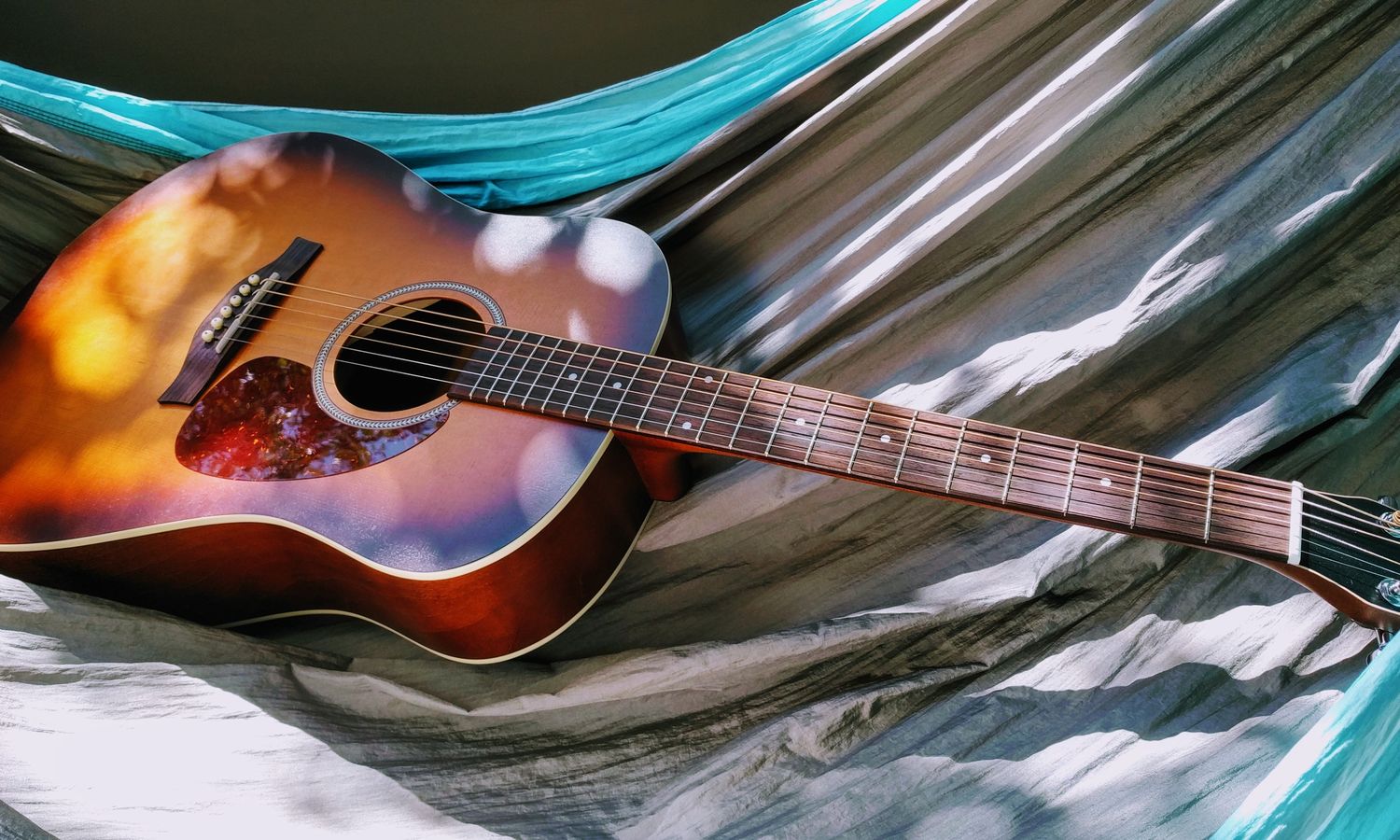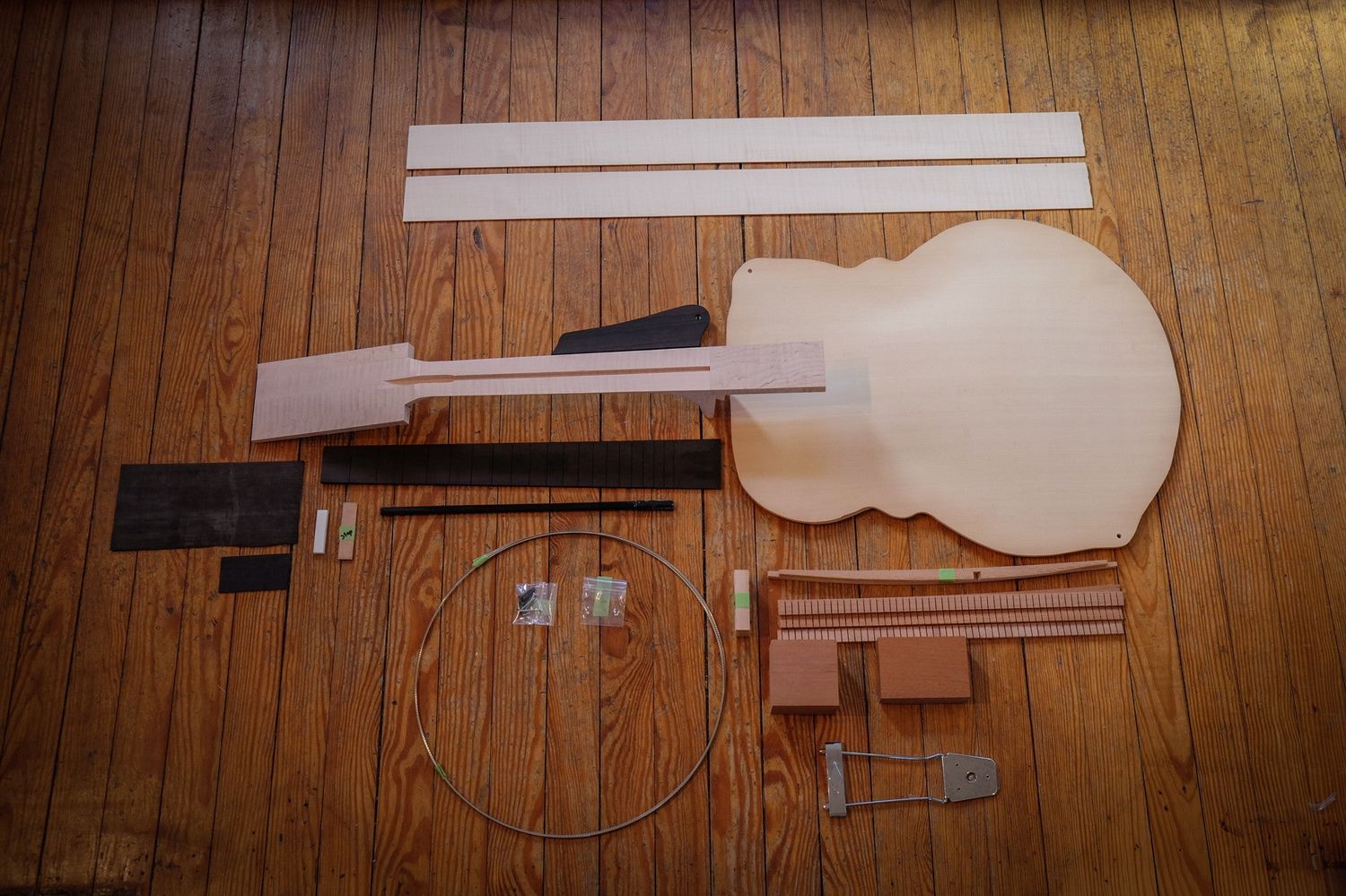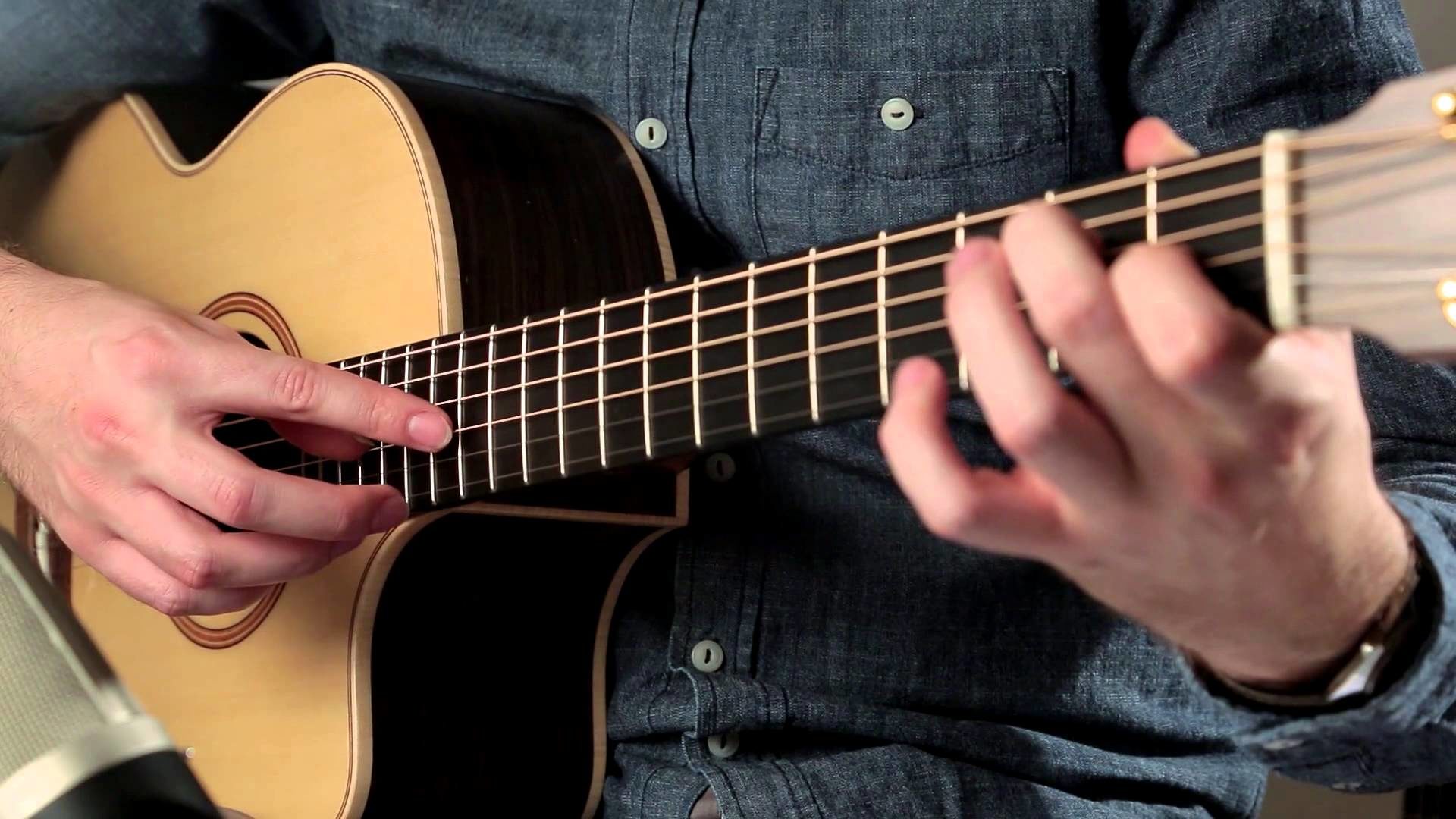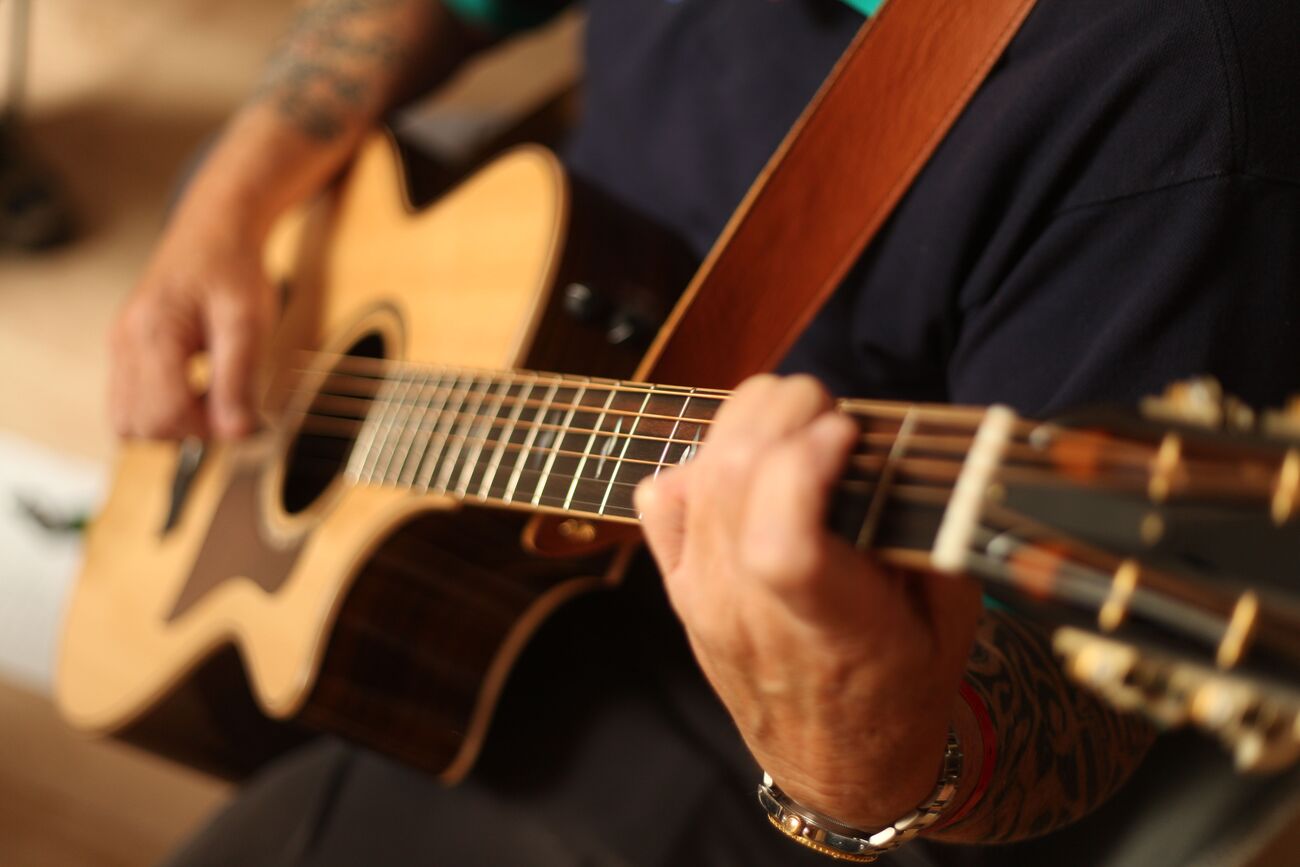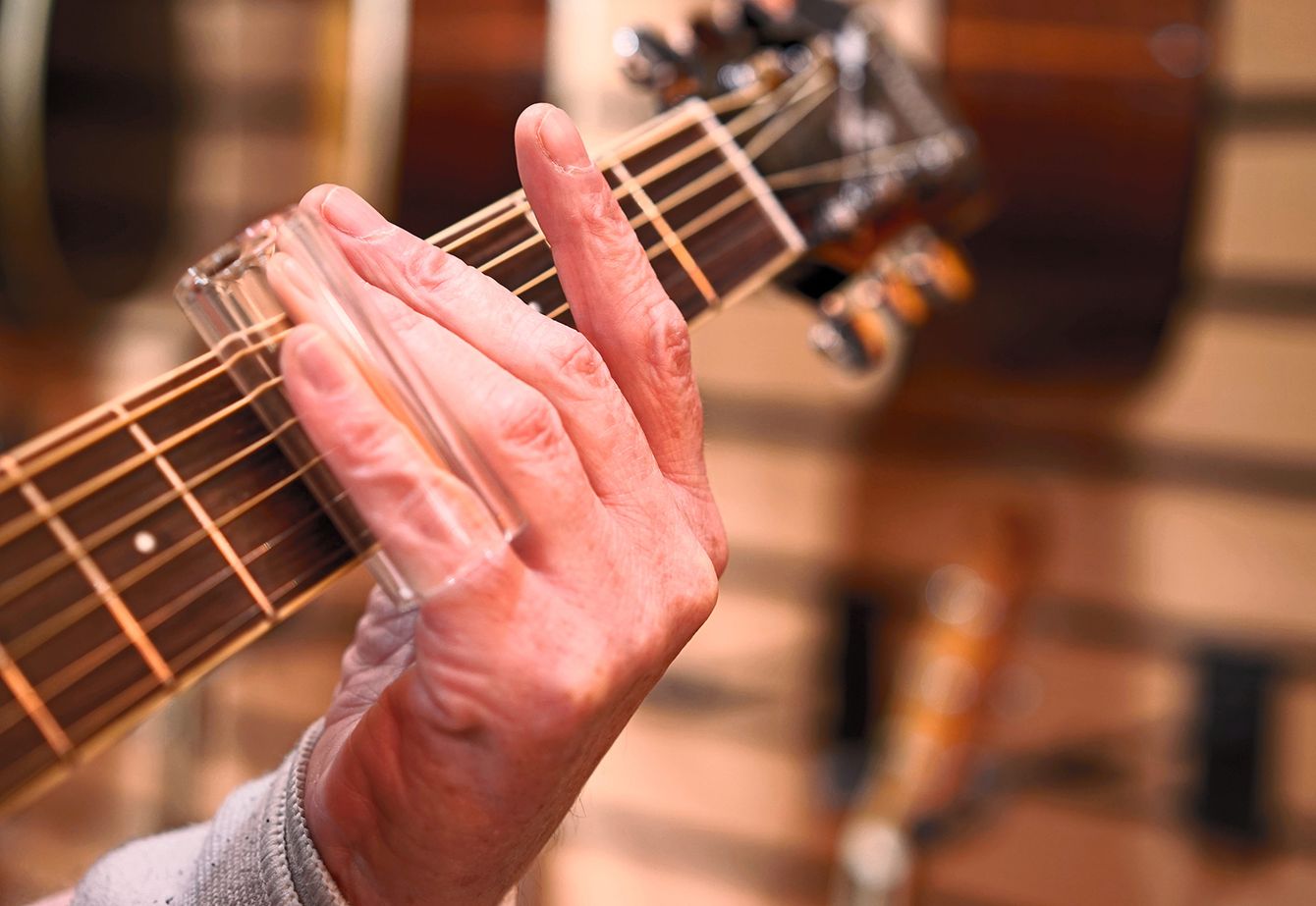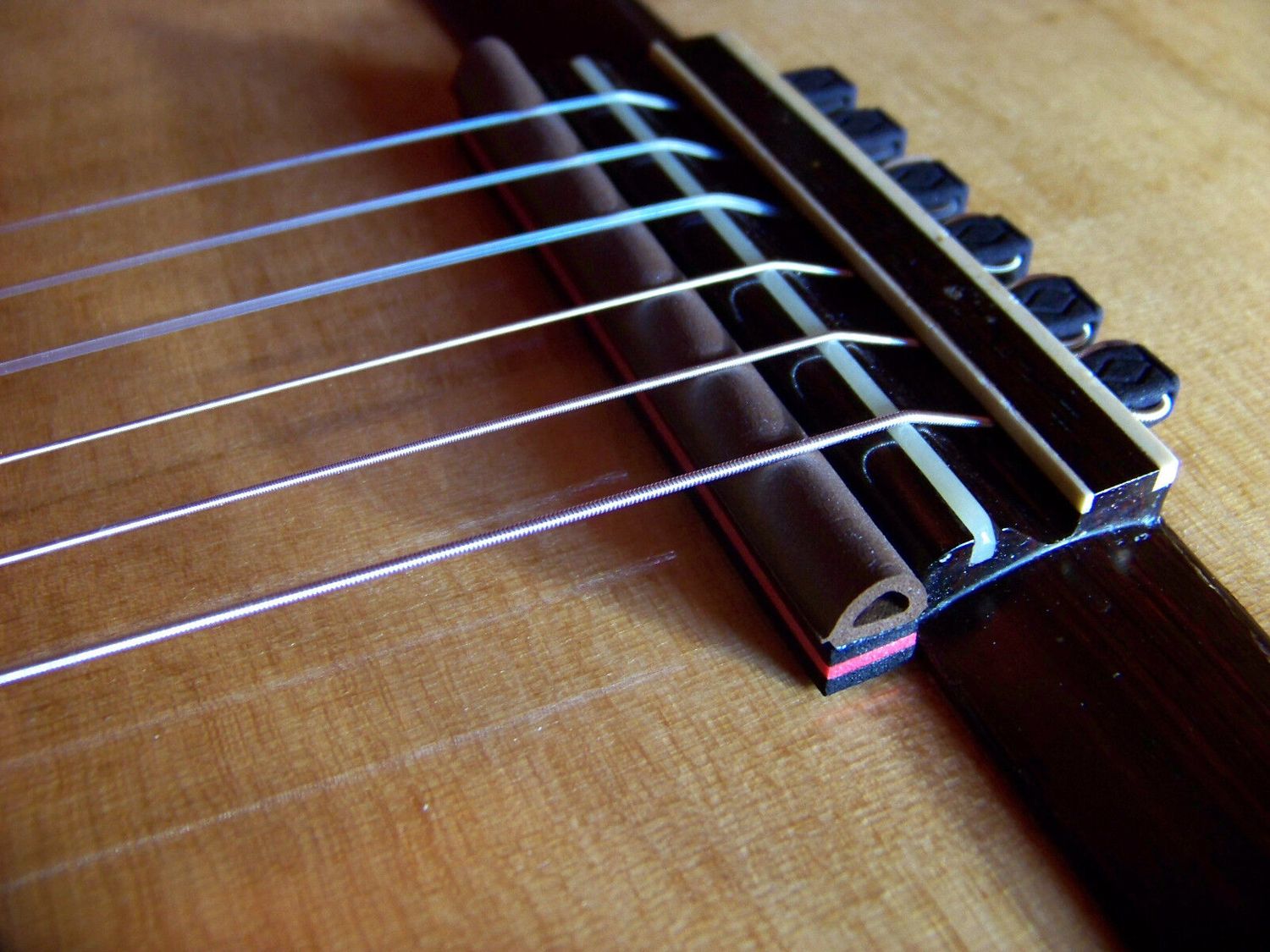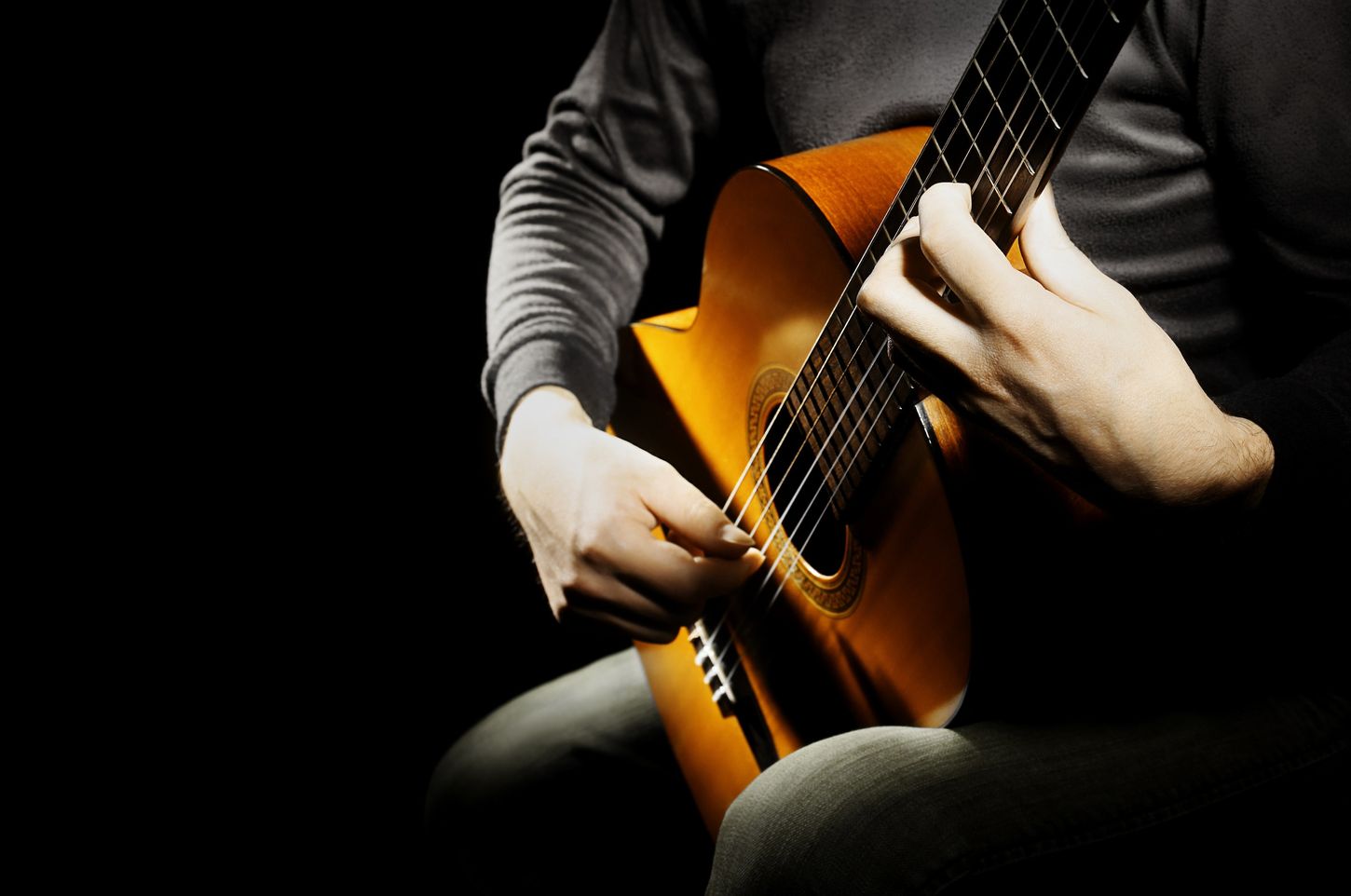Home>Production & Technology>Acoustic>How To Mix An Acoustic Guitar


Acoustic
How To Mix An Acoustic Guitar
Published: March 11, 2024
Learn how to mix an acoustic guitar like a pro with our step-by-step guide. Discover essential tips and techniques for achieving the perfect acoustic sound.
(Many of the links in this article redirect to a specific reviewed product. Your purchase of these products through affiliate links helps to generate commission for AudioLover.com, at no extra cost. Learn more)
Table of Contents
Introduction
Mixing an acoustic guitar is an art form that requires a delicate balance of technical expertise and creative intuition. Whether you're a seasoned audio engineer or a passionate musician looking to enhance your recordings, understanding the intricacies of acoustic guitar mixing can significantly elevate the quality of your sound.
Acoustic guitars possess a unique sonic character that can enrich a wide range of musical genres, from folk and country to pop and rock. When properly mixed, the warm, resonant tones of an acoustic guitar can serve as the cornerstone of a captivating musical arrangement, adding depth, texture, and emotional depth to the overall sound.
In the realm of audio production, the process of mixing an acoustic guitar involves a series of nuanced steps, each playing a crucial role in sculpting the instrument's sonic presence within a mix. From selecting the right microphone to applying precise EQ and compression settings, every decision made during the mixing process contributes to the final sonic tapestry.
In this comprehensive guide, we will delve into the intricacies of mixing an acoustic guitar, exploring the fundamental techniques and best practices that can help you achieve professional-quality results. Whether you're recording a solo acoustic performance or integrating the instrument into a larger ensemble, mastering the art of acoustic guitar mixing will empower you to create captivating, sonically rich recordings that resonate with listeners.
Throughout this journey, we will uncover the nuances of microphone selection, optimal positioning, level adjustments, and the application of EQ and compression to enhance the natural beauty of the acoustic guitar. Additionally, we will explore the art of blending the instrument seamlessly with other elements of a mix, ensuring that it occupies its rightful place within the sonic landscape.
By the end of this guide, you will have gained valuable insights into the art and science of mixing an acoustic guitar, equipping you with the knowledge and skills to elevate your recordings to new heights. Let's embark on this sonic adventure and unlock the full potential of the acoustic guitar in the realm of audio production.
Choosing the Right Microphone
Selecting the right microphone is a pivotal decision that significantly influences the quality and character of the recorded acoustic guitar sound. With a myriad of microphone options available, each offering distinct sonic characteristics, it's essential to consider the specific tonal qualities and nuances of the acoustic guitar to make an informed choice.
When it comes to capturing the rich, resonant tones of an acoustic guitar, condenser microphones are widely favored for their ability to faithfully reproduce the instrument's natural timbre and transient response. The inherent sensitivity and wide frequency range of condenser microphones make them well-suited for capturing the intricate nuances and harmonic richness of acoustic guitar performances.
Within the realm of condenser microphones, there are various polar patterns to consider, each offering unique sonic capture capabilities. For instance, a cardioid microphone pattern is often preferred for isolating the acoustic guitar and minimizing unwanted ambient noise, making it an ideal choice for solo performances or intimate recordings. On the other hand, omnidirectional microphones can capture a more expansive, room-like sound, making them suitable for capturing the acoustic guitar within a larger acoustic space or ensemble setting.
It's important to consider the microphone's frequency response characteristics, as this will directly impact the tonal representation of the acoustic guitar. Microphones with a relatively flat frequency response across the audible spectrum are well-suited for capturing the natural tonal balance of the instrument, ensuring that the recorded sound remains faithful to the original acoustic character.
Additionally, the microphone's transient response, or its ability to accurately capture the rapid changes in the acoustic guitar's dynamics, is a crucial factor to consider. A microphone with a fast transient response can faithfully reproduce the intricate plucks, strums, and subtle nuances of the acoustic guitar, preserving the instrument's expressive dynamics with precision and clarity.
Ultimately, the choice of microphone for capturing the acoustic guitar should align with the specific sonic vision and artistic direction of the recording. By carefully evaluating the tonal characteristics, polar patterns, frequency response, and transient capture capabilities of different microphones, you can make an informed decision that elevates the sonic quality and authenticity of the recorded acoustic guitar performance.
Positioning the Microphone
Positioning the microphone plays a pivotal role in capturing the true essence and tonal nuances of an acoustic guitar. The placement of the microphone relative to the instrument, as well as its distance and angle, directly influences the captured sound, allowing for a tailored sonic representation that complements the unique characteristics of the acoustic guitar.
When positioning the microphone for acoustic guitar recording, the sound engineer or musician must consider the instrument's tonal complexity and the desired sonic outcome. A common and effective technique involves placing the microphone near the 12th fret of the acoustic guitar, where the instrument's tonal balance is often optimal. This position captures a blend of the guitar's warm low-end resonance and its bright, articulate treble frequencies, resulting in a balanced and natural sound.
Experimenting with microphone distance is also crucial in achieving the desired tonal representation. Placing the microphone closer to the acoustic guitar yields a more intimate and detailed sound, accentuating the instrument's subtle nuances and transient dynamics. Conversely, positioning the microphone at a greater distance captures a broader, more ambient sound, incorporating the natural reverberation and spatial characteristics of the recording environment.
Furthermore, the angle at which the microphone is positioned relative to the acoustic guitar significantly impacts the captured sound. Angling the microphone slightly off-axis from the instrument's soundhole can mitigate excessive low-frequency buildup, resulting in a more balanced and defined representation of the acoustic guitar's tonal spectrum. Additionally, experimenting with different angles can emphasize specific tonal characteristics, allowing for nuanced adjustments to the instrument's sonic presence within the mix.
In addition to the aforementioned techniques, the use of multiple microphones, such as a stereo pair or a combination of close and ambient mics, can further enhance the spatial depth and sonic richness of the recorded acoustic guitar. By strategically positioning and blending multiple microphones, engineers can capture a comprehensive sonic image that encapsulates the instrument's full tonal spectrum and spatial presence.
Ultimately, the art of positioning the microphone for acoustic guitar recording involves a delicate balance of technical precision and creative intuition. By leveraging the instrument's tonal complexity and experimenting with microphone placement, distance, and angle, engineers and musicians can capture a captivating and authentic representation of the acoustic guitar's sonic beauty, enriching the overall musical experience for listeners.
Setting the Levels
Setting the levels for an acoustic guitar recording is a critical step in achieving a balanced and impactful sonic representation. Proper level adjustments ensure that the recorded signal maintains optimal clarity, dynamic range, and headroom, allowing the acoustic guitar to seamlessly integrate into the mix while preserving its natural tonal characteristics.
When setting the levels for an acoustic guitar, it's essential to begin by establishing a suitable input gain on the microphone preamplifier or audio interface. The input gain should be adjusted to capture the acoustic guitar's performance with adequate signal strength, ensuring that the recorded signal remains free from excessive noise while retaining sufficient headroom for dynamic peaks.
During the recording process, monitoring the acoustic guitar's signal levels in real-time allows for precise adjustments to optimize the recording quality. Utilizing a visual level meter on the audio interface or digital audio workstation (DAW) provides valuable insight into the signal's amplitude, allowing the recording engineer to monitor and adjust the levels in response to the instrument's dynamic performance.
Maintaining a balanced signal level throughout the acoustic guitar recording is crucial for capturing the instrument's expressive dynamics while avoiding signal distortion or clipping. By attentively monitoring the signal levels and making subtle adjustments to the input gain or microphone placement, engineers can ensure that the recorded acoustic guitar performance remains faithful to the instrument's nuanced tonal nuances and dynamic intricacies.
In addition to monitoring the input levels, it's important to consider the acoustic guitar's relative level within the overall mix. Balancing the acoustic guitar's signal level with other instruments and vocal tracks is essential for achieving a cohesive and well-defined sonic landscape. By adjusting the acoustic guitar's level in relation to other elements of the mix, engineers can sculpt a balanced and immersive sonic environment that highlights the instrument's sonic presence without overpowering or being overshadowed by other musical elements.
Ultimately, setting the levels for an acoustic guitar recording demands a meticulous approach that prioritizes sonic fidelity, dynamic range, and cohesive integration within the mix. By attentively monitoring and adjusting the input gain, signal levels, and relative balance within the mix, engineers can capture the acoustic guitar's performance with precision and artistry, ensuring that its sonic beauty resonates authentically within the broader musical context.
Adding EQ and Compression
Adding EQ and compression to the recorded acoustic guitar is a pivotal stage in the mixing process, allowing engineers to sculpt the instrument's sonic characteristics, enhance its tonal balance, and ensure its seamless integration within the overall mix. By applying precise EQ adjustments and employing dynamic control through compression, the inherent warmth, clarity, and expressive dynamics of the acoustic guitar can be accentuated, resulting in a polished and sonically captivating sound.
Equalization (EQ)
When applying EQ to the recorded acoustic guitar, the primary objective is to refine its tonal balance, address frequency imbalances, and accentuate its inherent sonic qualities. A common starting point involves identifying and attenuating any resonant frequencies or unwanted low-end rumble that may detract from the instrument's clarity and definition. This can be achieved by applying a high-pass filter to remove excessive low-frequency content, allowing the instrument's natural warmth to shine through without muddying the mix.
Next, attention can be directed towards enhancing the acoustic guitar's tonal richness and presence. Gentle boosts in the midrange frequencies can impart a sense of warmth and intimacy to the instrument, accentuating its harmonic complexity and allowing its timbre to cut through the mix with clarity and definition. Careful adjustments to the high-frequency range can add sparkle and articulation to the acoustic guitar's sound, further enhancing its expressive qualities and ensuring that its intricate nuances are faithfully represented in the mix.
Compression
The application of compression plays a crucial role in controlling the dynamic range of the acoustic guitar, ensuring that its performance remains consistent and impactful throughout the recording. By employing a gentle compression ratio and setting an appropriate threshold, engineers can tame any excessive peaks in the acoustic guitar's dynamics while preserving its subtle nuances and expressive transients.
Additionally, the use of compression can impart a sense of cohesion and sustain to the acoustic guitar's performance, allowing each note and chord to resonate with sustained clarity and presence. By carefully adjusting the attack and release parameters, engineers can tailor the compression settings to complement the instrument's playing style, ensuring that its dynamic performance remains expressive and engaging while benefiting from controlled dynamic consistency.
In essence, the strategic application of EQ and compression to the recorded acoustic guitar empowers engineers to refine its sonic characteristics, enhance its tonal balance, and ensure its seamless integration within the broader mix. By delicately sculpting the instrument's frequency response and controlling its dynamic range, the acoustic guitar can emerge as a compelling and sonically captivating centerpiece within the musical arrangement, captivating listeners with its warmth, clarity, and expressive depth.
Blending with Other Instruments
Blending the acoustic guitar with other instruments within a mix is a nuanced art that requires a keen understanding of sonic interactions and musical cohesion. When integrating the acoustic guitar into a broader musical arrangement, whether it be a band performance or a multi-instrumental recording, the goal is to ensure that the instrument's sonic presence harmoniously complements and enriches the overall musical tapestry.
One fundamental consideration when blending the acoustic guitar with other instruments is the concept of frequency allocation and sonic space. Each instrument within the mix occupies a specific frequency range and sonic footprint, and it's essential to orchestrate their interactions in a manner that allows each instrument to shine while avoiding sonic clutter or masking.
In the context of blending the acoustic guitar with other instruments, careful attention should be given to frequency carving and spectral balance. By judiciously carving out frequency pockets for each instrument, engineers can ensure that the acoustic guitar's rich harmonic spectrum coexists harmoniously with the tonal characteristics of other instruments, allowing for a balanced and immersive sonic experience.
Furthermore, the spatial positioning of the acoustic guitar within the mix plays a crucial role in achieving a cohesive and well-defined sonic landscape. By strategically panning the acoustic guitar within the stereo field and considering its spatial relationship with other instruments, engineers can create a sense of depth and dimension within the mix, enhancing the overall sonic immersion and spatial realism.
In addition to frequency allocation and spatial positioning, the dynamic interaction between the acoustic guitar and other instruments is a key aspect of achieving a cohesive and expressive musical blend. By attentively balancing the dynamic interplay between the acoustic guitar's performance and the dynamics of other instruments, engineers can ensure that each musical element contributes to a compelling and emotionally resonant sonic narrative.
Ultimately, the art of blending the acoustic guitar with other instruments involves a delicate balance of technical precision and creative intuition. By orchestrating the instrument's sonic interactions with a keen ear for frequency allocation, spatial positioning, and dynamic cohesion, engineers can craft a musical landscape where the acoustic guitar's warmth, resonance, and expressive depth seamlessly intertwine with the sonic fabric of the broader musical arrangement, captivating listeners with its emotive allure and sonic richness.
Conclusion
In conclusion, the art of mixing an acoustic guitar encompasses a multifaceted journey that intertwines technical expertise with creative intuition, resulting in captivating and sonically rich recordings. Throughout this comprehensive guide, we have delved into the fundamental techniques and best practices that underpin the process of mixing an acoustic guitar, shedding light on the nuanced steps that contribute to the instrument's sonic excellence within a mix.
From the crucial decision of selecting the right microphone to the meticulous positioning and level adjustments, every aspect of the acoustic guitar mixing process plays a pivotal role in capturing the instrument's natural beauty and expressive depth. The careful selection of a suitable microphone, coupled with thoughtful positioning and level adjustments, lays the foundation for capturing the acoustic guitar's tonal nuances with precision and authenticity.
Furthermore, the application of EQ and compression serves as a transformative stage in the mixing process, allowing engineers to sculpt the acoustic guitar's sonic characteristics, enhance its tonal balance, and ensure its seamless integration within the broader musical arrangement. By delicately refining the instrument's frequency response and controlling its dynamic range, the acoustic guitar emerges as a compelling centerpiece within the mix, captivating listeners with its warmth, clarity, and expressive depth.
Moreover, the art of blending the acoustic guitar with other instruments within a mix demands a keen understanding of sonic interactions and musical cohesion. By orchestrating the instrument's sonic interactions with a discerning ear for frequency allocation, spatial positioning, and dynamic cohesion, engineers can craft a musical landscape where the acoustic guitar's emotive allure seamlessly intertwines with the sonic fabric of the broader musical arrangement, captivating listeners with its expressive richness.
In essence, mastering the art of mixing an acoustic guitar empowers audio engineers and musicians to create recordings that resonate with authenticity, emotional depth, and sonic excellence. By embracing the technical intricacies and creative possibilities inherent in acoustic guitar mixing, individuals can elevate their recordings to new heights, capturing the instrument's timeless charm and evocative resonance with artistry and precision. As we conclude this sonic journey, may the insights and techniques shared in this guide inspire and empower you to embark on your own creative endeavors, harnessing the boundless potential of the acoustic guitar within the realm of audio production.


